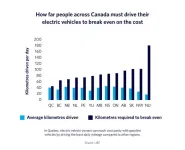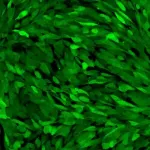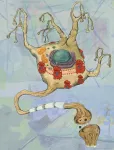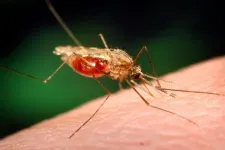(Press-News.org) Electric vehicles are a critical part of Canada’s climate strategy, but a new University of British Columbia study highlights how it’s cheaper in some regions than others to drive electric—making it more challenging for certain households to make the switch.
Location, location, location
The researchers analyzed how far people need to drive their electric car to break even on the cost, factoring in the impacts of tax rebates and tax rates, charging costs, typical distance households travel in a region, and electricity costs—all of which vary from region to region.
They found Quebec had the biggest advantage, followed by B.C. and Manitoba, while Nunavut came up last.
“In Quebec, an electric car owner must travel at least 46 kilometres per day to come out ahead in comparison with owning a traditional car. In Nunavut, this number rises to 180 kilometres,” says study author Bassam Javed, a PhD candidate at the Institute for Resources, Environment and Sustainability (IRES).
Small is beautiful
These results suggest that if you’re looking to make the switch to electric, choosing a smaller, basic EV can realize more savings than a luxury electric car, says study author Dr. Amanda Giang, a professor in the department of mechanical engineering and at IRES.
As the cost of switching to EVs will be higher in some places and for some households, targeted interventions will be needed to address the affordability gap. Dr. Giang added: “Canada needs to take many paths towards clean and affordable transportation for all, which means not only supporting transitions to EVs, but also public transit and active transport.”
END
Driving an electric car is cheaper in some parts of Canada than others
2024-02-29
ELSE PRESS RELEASES FROM THIS DATE:
Emergency atmospheric geoengineering wouldn’t save the oceans
2024-02-29
WASHINGTON — Climate change is heating the oceans, altering currents and circulation patterns responsible for regulating climate on a global scale. If temperatures dropped, some of that damage could theoretically be undone. But employing “emergency” atmospheric geoengineering later this century in the face of continuous high carbon emissions would not be able to reverse changes to ocean currents, a new study finds. This would critically curtail the intervention’s potential effectiveness ...
New model of key brain tumor feature could help scientists understand how to develop new treatments
2024-02-29
ANN ARBOR, Michigan — Researchers at the University of Michigan Health Rogel Cancer Center are exploiting a unique biological feature of glioblastoma to gain a better understanding of how this puzzling brain cancer develops and how to target new treatments against it.
The team, led by senior author Pedro Lowenstein, M.D., Ph.D., Richard Schneider Collegiate Professor of Neurosurgery at Michigan Medicine, had previously identified oncostreams as a key feature in glioblastoma development and in more aggressive disease. These highly active, elongated, spindle-like cells ...
Study: Mutations in hereditary Alzheimer’s disease damage neurons without ‘usual suspect’ amyloid plaques
2024-02-29
LAWRENCE — A University of Kansas study of rare gene mutations that cause hereditary Alzheimer's disease shows these mutations disrupt production of a small sticky protein called amyloid.
Plaques composed of amyloid are notoriously found in the brain in Alzheimer’s disease and have long been considered responsible for the inexorable loss of neurons and cognitive decline. Using a model species of worm called C. elegans that’s often used in labs to study diseases at the molecular level, the research team came to the surprising conclusion that the stalled process of amyloid production — not the amyloid itself — can trigger loss of critical ...
Rice lab finds better way to handle hard-to-recycle material
2024-02-29
HOUSTON – (Feb. 29, 2024) – Glass fiber-reinforced plastic (GFRP), a strong and durable composite material, is widely used in everything from aircraft parts to windmill blades. Yet the very qualities that make it robust enough to be used in so many different applications make it difficult to dispose of ⎯ consequently, most GFRP waste is buried in a landfill once it reaches its end of life.
According to a study published in Nature Sustainability, Rice University researchers and collaborators have developed a new, energy-efficient upcycling method to transform glass fiber-reinforced plastic ...
Ice shell thickness reveals water temperature on ocean worlds
2024-02-29
ITHACA, N.Y. – Cornell University astrobiologists have devised a novel way to determine ocean temperatures of distant worlds based on the thickness of their ice shells, effectively conducting oceanography from space.
Available data showing ice thickness variation already allows a prediction for the upper ocean of Enceladus, a moon of Saturn, and a NASA mission’s planned orbital survey of Europa’s ice shell should do the same for the much larger Jovian moon, enhancing the mission’s findings about whether it could support ...
Garrett Isaac Neubauer Center for Cardiovascular Innovation launches at Columbia
2024-02-29
NEW YORK, NY (February 29, 2024)--Columbia University Vagelos College of Physicians and Surgeons (VP&S) today announced the launch of a new center for pediatric cardiovascular innovation, made possible through a visionary gift by Lawrence Neubauer. The mission of the new center is to improve outcomes for patients through groundbreaking research and care and to define the next cures for and future practice in congenital heart disease (CHD)—here and across the world.
In recognition of the transformative generosity of Lawrence Neubauer, the center will be named the Garrett Isaac Neubauer Center for Cardiovascular ...
MSU co-authored study: 10 insights to reduce vaccine hesitancy on social media
2024-02-29
EAST LANSING, Mich. — Effective population level vaccination campaigns are fundamental to public health. Countercampaigns, which are as old as the first vaccines, can disrupt uptake and threaten public health globally.
Even before March 2020, vaccine hesitancy was directly linked to misinformation — false, inaccurate information promoted as factual — on social media. Once COVID-19 reached pandemic status, social media was acknowledged as the epicenter of information leading to vaccine hesitancy, which the World Health Organization, ...
New study: Deforestation exacerbates risk of malaria for most vulnerable children
2024-02-29
Malaria kills more than 600,000 people each year worldwide, and two thirds are children under age five in sub-Saharan Africa. Scientists have found a treatment that could prevent thousands of these deaths: trees. New research conducted at the University of Vermont (UVM) and published today in the journal GeoHealth suggests forests can provide natural protection against disease transmission, particularly for the most vulnerable children.
Malaria spreads through the bite of Anopheles mosquitoes. While malaria is a disease long associated with lower socioeconomic status, the UVM study links deforestation with higher risk of the disease, particularly for ...
DOE announces plans to host an informational meeting and requests expressions of interest for the Thomas Jefferson National Accelerator Facility Management and Operating Contract Competition
2024-02-29
Washington, D.C. – The U.S. Department of Energy (DOE) announced the schedule for upcoming events and submissions associated with the competition for the management and operating contract for the Thomas Jefferson National Accelerator Facility (TJNAF).
TJNAF is a DOE national laboratory and DOE-sponsored Federally Funded Research and Development Center that has a mission focused on delivering breakthrough science and technology in nuclear physics.
DOE will host an informational meeting and site tour on March 27, 2024 at TJNAF to provide information regarding the site to interested parties. ...
Changes in flu circulation means US likely to see vaccines move from quadrivalent to trivalent
2024-02-29
U.S. flu vaccines are likely to move from quadrivalent to trivalent due to a change in circulating influenza viruses, says a University of Michigan researcher.
Currently, all influenza vaccines in the United States are quadrivalent, meaning that they protect against four different flu viruses.
In a new paper published in the New England Journal of Medicine, researchers detail the spread of influenza B/Yamagata virus, which has not been in circulation since early 2020; the regulatory discussions and recommendations on updating vaccines; and the manufacturing considerations ...







